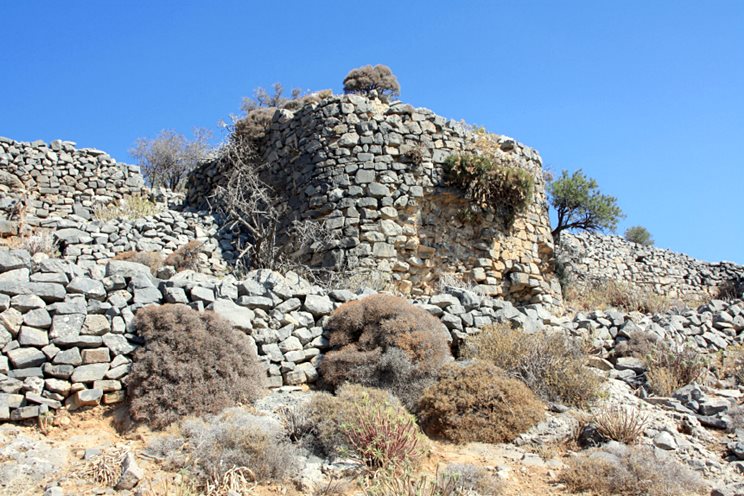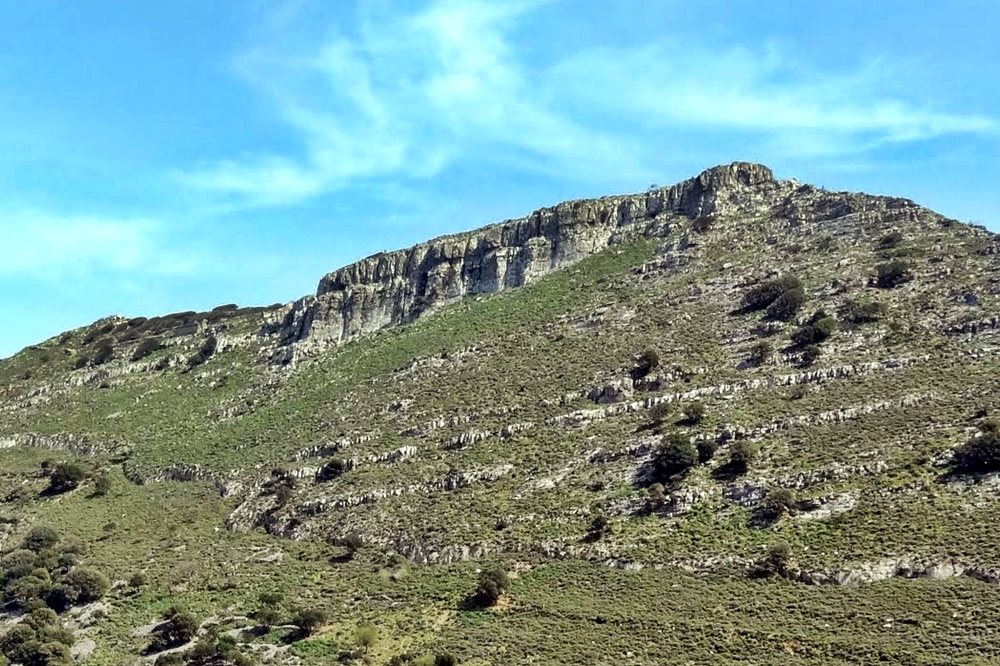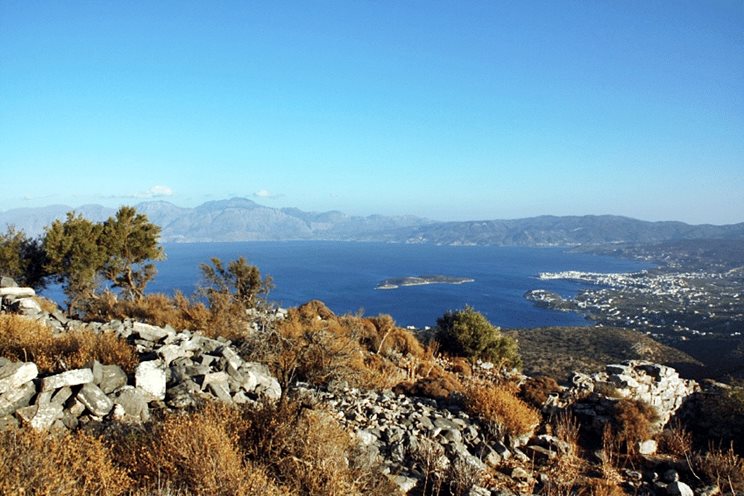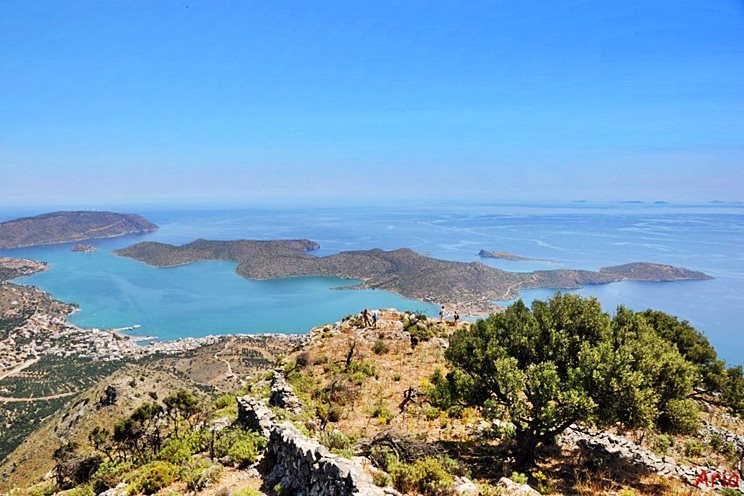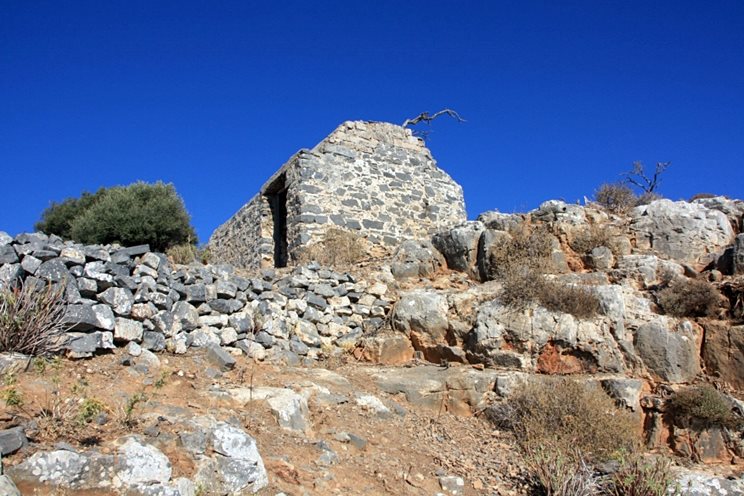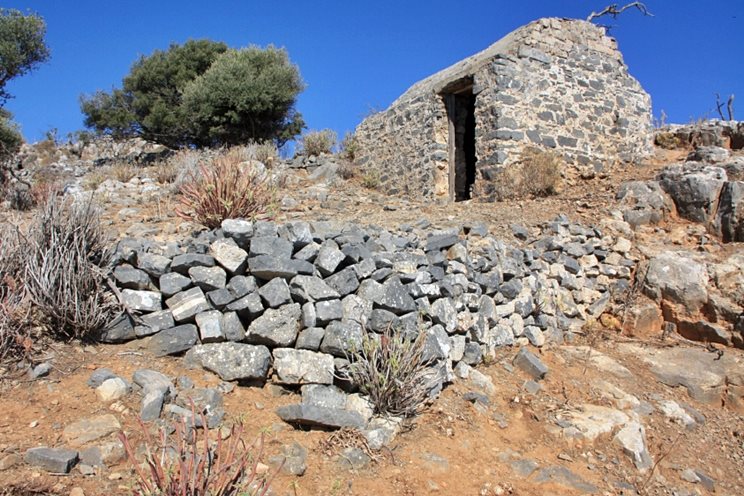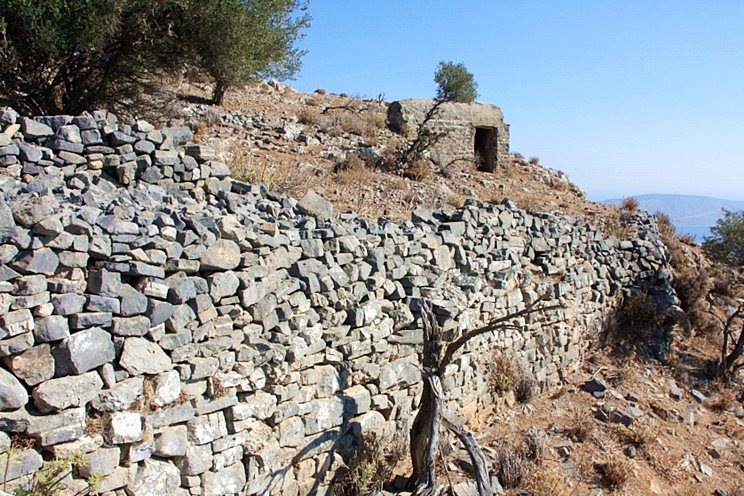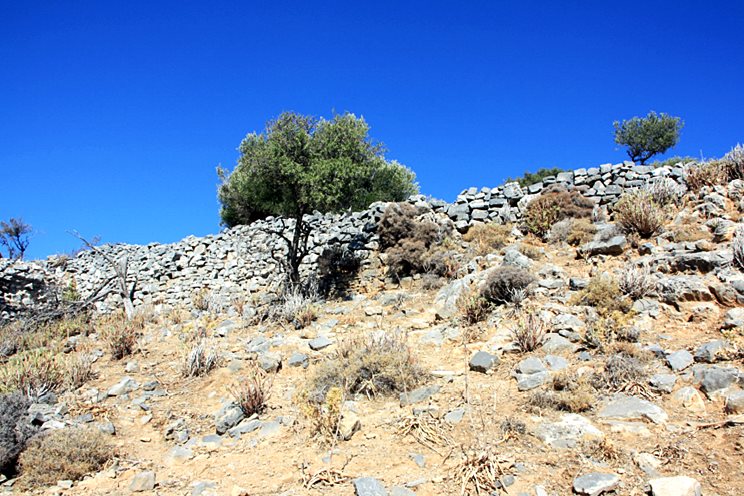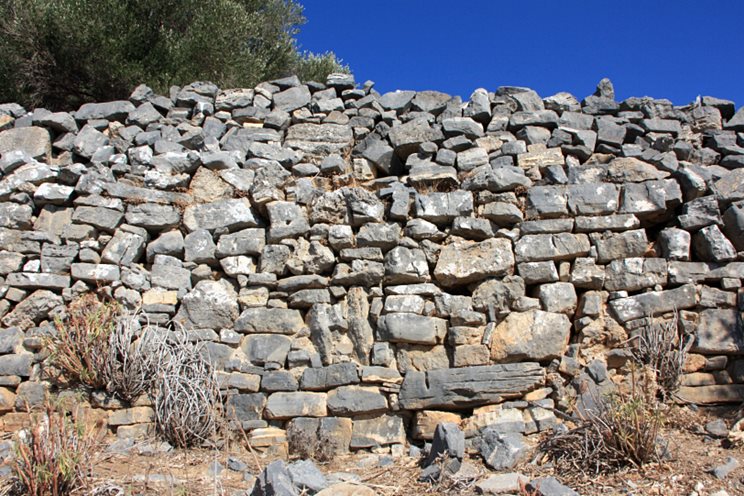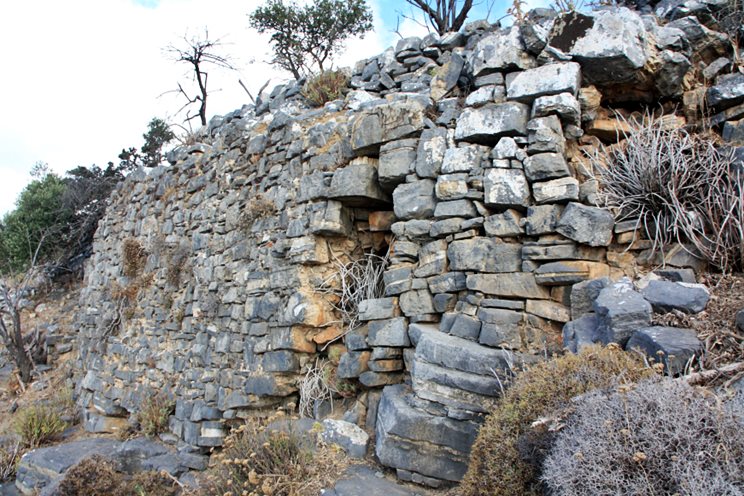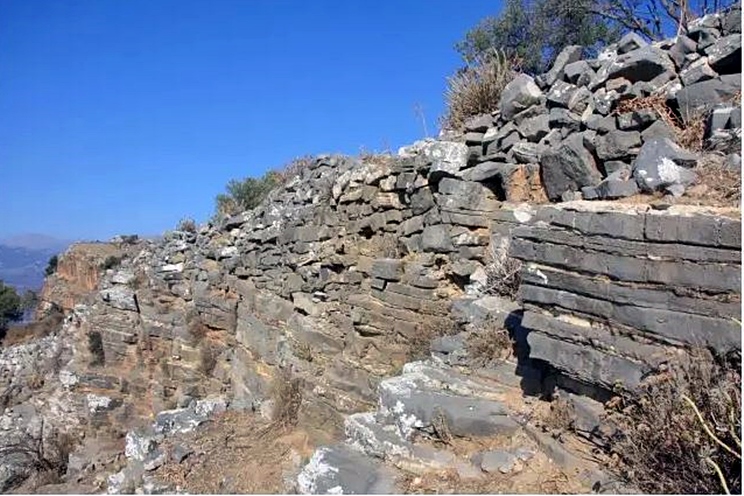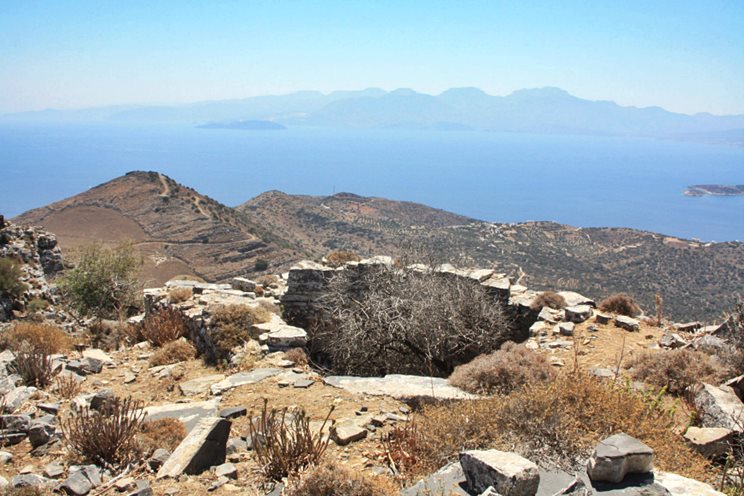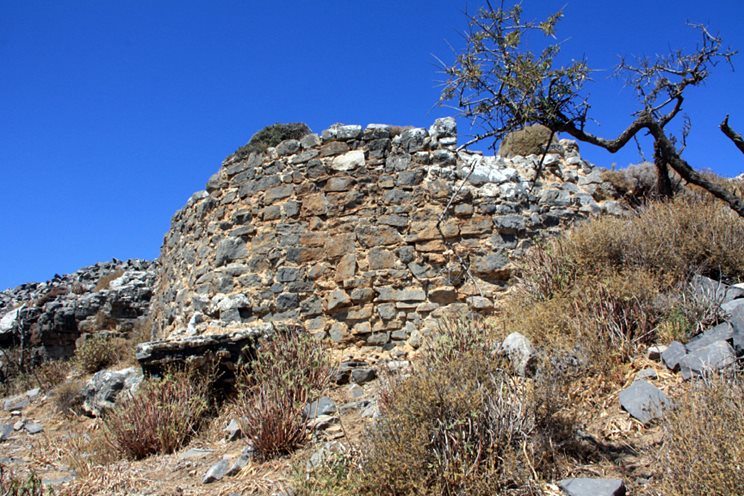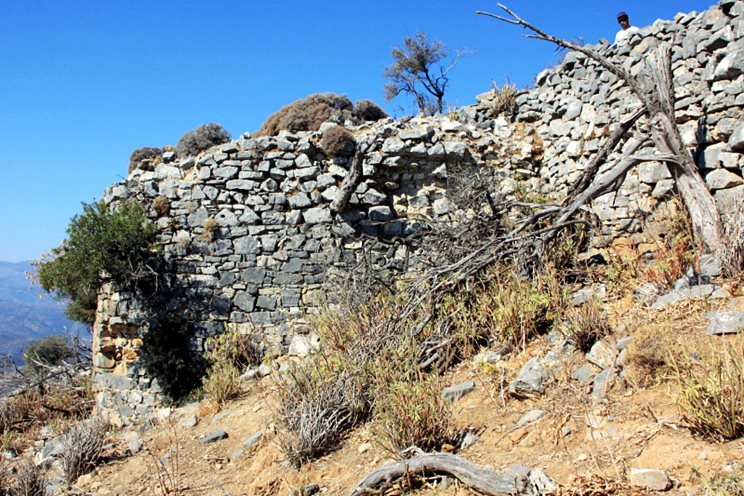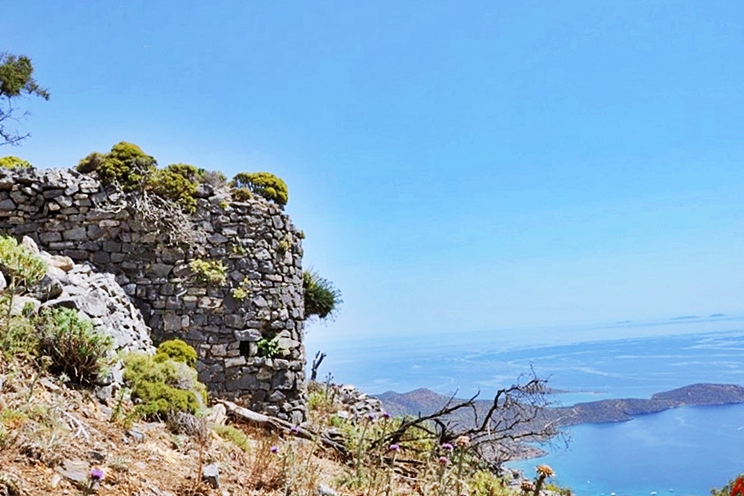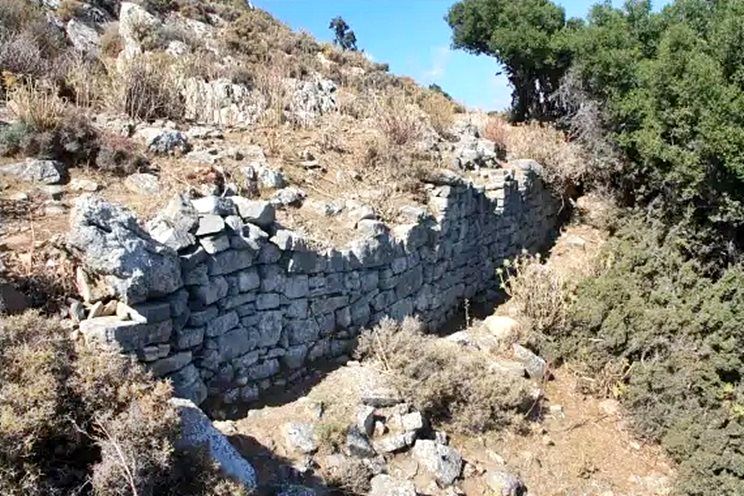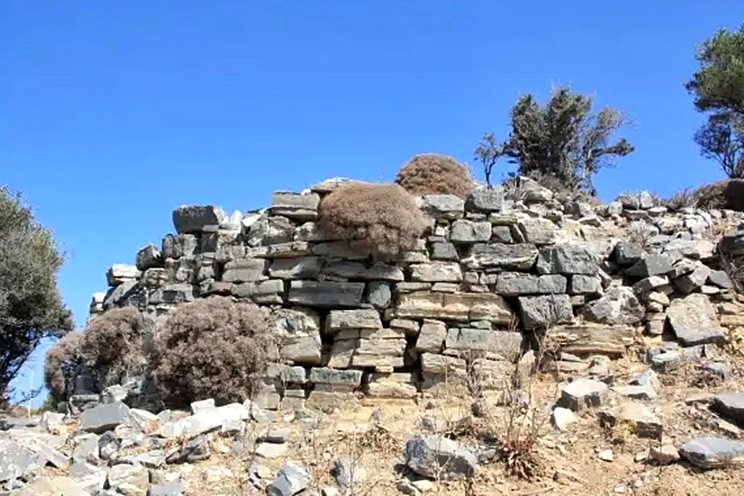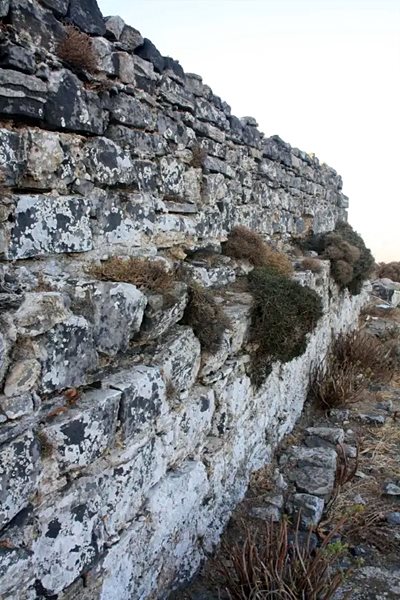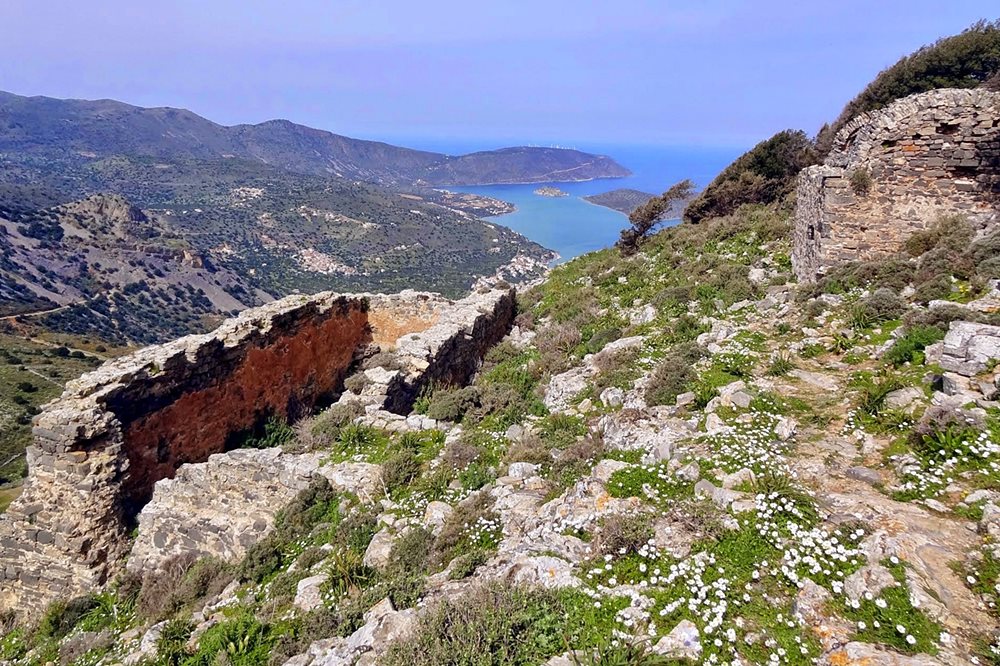Elounda, Agios Nicolaos, Lasithi,Crete
Fortification of Oxa
| Location: |
| On the rocky hill “Oxa” overlooking the village Kalos Lakkos, 3km SW of Elounda in Crete |
| Region > Prefecture: | 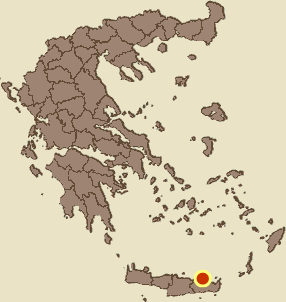 |
| Crete Lasithi | |
| Municipality > Town: | |
| City of Agios Nicolaos • Elounda | |
| Altitude: | |
|
Elevation ≈ 530 m (Relative Height≈400 m) |
| Time of Construction | Origin | |
| 7th to 8th cent. | BYZANTINE |
|
| Castle Type | Condition | |
| Medieval Settlement |
In Ruins
|
Ruins of a medieval settlement with a fortification of unusual layout: it consists of retaining walls in various levels that protect terraces that are similar to the terraces (locally named pezoules) of the fields in the Aegean islands. Another special characteristic is the many cisterns (it has 52!).
History
The extensive ruins in Oxa belong to a fortified Byzantine settlement that was created between the 7th and 9th century AD.
The accurate dating of the fortifications and of the other ruins is not easy, but according to all indications they are medieval constructions belonging to the beginning of the mid-Byzantine period, that is, as mentioned, somewhere between the 7th and the 9th century with some last additions perhaps in the 10th century. Not later.
This dating is confirmed by surface ceramic finds. There are also a few ceramic findings that show that the site was used during the Late Minoan period (shortly before 1000 BC) and perhaps a little later, during the Archaic period. However, there is no trace of habitation during the ancient classical period or during the Roman or Hellenistic periods. The absence of ancient Greek finds, dating after the Late Minoan era, means that the information that there was once a town named Naxos on the mountain is incorrect. This wrong claim, that is recorded in maps and websites, was first made by researchers of the 19th century who were confused by the fact that, in antiquity, Naxos (the real one, in Cyclades) and the area of Olous were the two places known to produce whetstone.
In ancient times, until the Roman period, there were several other cities in the area. Most important of these was the ancient Olous that Homer mentions as the famous place of origin of the whetstone. The few ruins of the ancient city of Olous are preserved in the area of Elounda, mostly under the sea. Olous existed until the beginning of the mid-Byzantine period. It was destroyed by an earthquake in 780 AD. and much of it sank. This is important, because it is possible that its destruction is associated with the development of the settlement on Oxa.
The reason for the development of the settlement of Oxa may be related to the catastrophe in Olounda, but it is likely that it started several decades before, around the end of the 7th century, when the Saracen pirates appeared in the Greek seas. The fortification in Oxa may have been a refuge for the population when raids started, but as the problem intensified, Oxa became a settlement, as evidenced by the large number of houses.
In conclusion, Oxa was created due to the raids of the Saracens towards the end of the 7th century and was further developed after the destruction of Olous at the end of the 8th century.
The settlement seems to have been abandoned in the 10th century, at the latest. It was not used during the 2nd Byzantine period, after Nikiforos Fokas recaptured Crete from the Arabs, nor of course during Venetian or Turkish rule.
Structure, Fortification & Buildings
Archaeological remains are located on the narrow plateau of the peak of Oxa, which extends for about 550 meters on the SW-SE axis. The altitude of the castle is about 530m. A large part of it (maybe 25% of the total length) at the western end, with houses, is not fortified, because it is protected naturally by the steep cliffs. The fortification covers the rest of the plateau, to the east.
The settlement is quite extensive, for that period. It occupies an area of around 50,000 sq.m. (maybe even more, as the outer contour is not clear).
The special feature of the fortification of Oxa is that there is not a curtain wall that encloses an interior yard, but there are fortification walls on various levels that resemble the terraces with dry stones that we find in the fields of the Aegean islands. The walls are mostly retaining walls that behind them have no empty space with a parapet, but the raised ground of the terrace. Only in a few places do the walls deviate from this logic, where they are combined with towers or with gate openings or when they protect cisterns.
The result of this unusual design is that the wall is not single, but, somehow, fragmentary. It extends in places to the point where it is interrupted by a terrain formation (rock, cliff, uphill) and continues to another level in an upper terrace.
This type of wall structure extends beyond the settlement, as a large part of the narrow labyrinthine path that leads to the settlement rests on similar retaining walls.
Although this system is quite unusual and unorthodox, the general picture is that the fortification must have been quite effective, enhanced by the morphology of the ground and the difficulty of access due to the walled path.
The masonry consists mostly of slate slabs (chipped to some extent) with mortar and smaller stones for filling in the gaps. The thickness of the wall is usually 0.7 to 0.8 meters and rarely exceeds 1 meter. The walls in several places are maintained at a satisfactory height reaching up to 4 meters.
The fortification walls are preserved in 17 separate parts (as said, they do not form an outer enclosure) and have a total length of about 250 meters. There is also a large part of walls at a very low height that may be remnants of a fortification wall but may also have been simple retaining walls.
At least 3 towers have been found on the walls. One of them has a U-shaped layout ("horseshoe" shape) and is maintained at a height of about 6 meters, with a diameter of 7m and a wall thickness of 1.1–1.2m. There are two other ruined towers, one circular and a square one.
Another special feature of the settlement of Oxa is its many cisterns (water tanks). The research has so far identified 52 of which 7 are reinforced with their outer wall being part of the fortification. They all had an internal coating. It should be noted that the local legend speaks of 101 cisterns in Oxa!
The unusually large number of cisterns is certainly related to the absence of natural springs on the rock, but that is not enough to explain this exaggeration. Let us keep in mind, however, that the castle may have hosted herds in addition to humans.
In addition to all this, the ruins of 66 houses and a church have been identified on Oxa.
| First entry in Kastrologos: | July 2020 |
Sources
- Adam Geisler, Diploma Master thesis Fortification system of the Byzantine site of Oxa (Crete), Masaryk University, 2015
- Website CretanBeaches - Αρχαία Νάξος στην Οξά
|
|
| Access |
|---|
| Entrance: |
| Free access |
| Other castles around |
|---|
| Vigla of Aforesmenos |
| Tower of Ambela |
| Koules of Episkopi |
| Mesokastela |
| Vigla at Yialou Kefali |
| Spinalonga |
| Tower of Vaïnia |
| Koules of Vasiliki |



